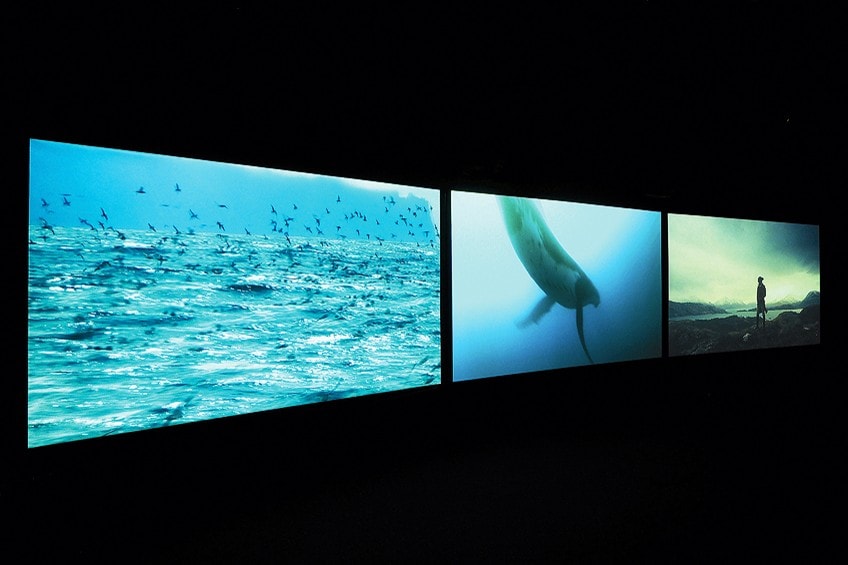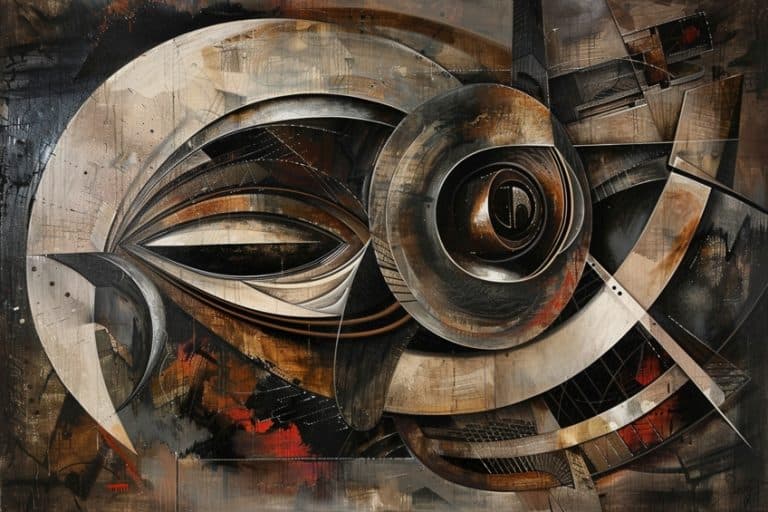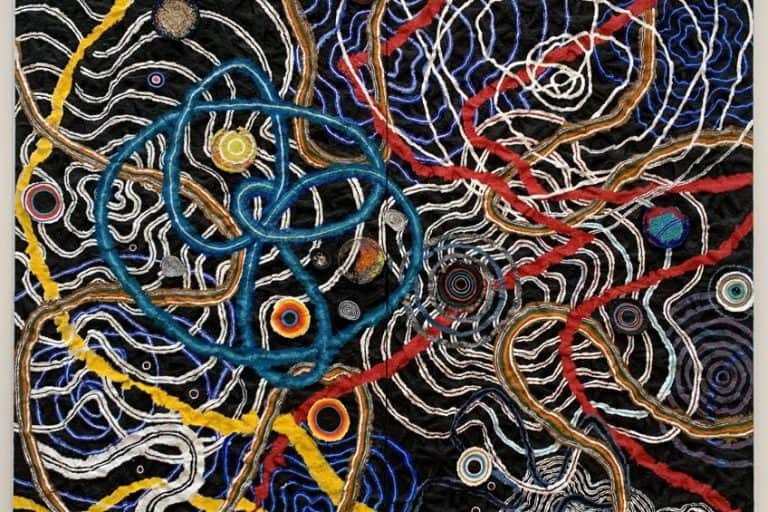Environmental Artists – Discover the Top Environmental Art Pieces
The discourse of art history traverses many art movements, with each leaving behind long-lasting effects on our current understanding of the evolution of art. One of the most impactful art movements, which emerged between 1960 and 1970, is called the Environmental art movement. This article will outline what Environmental art entails and highlight 10 important Environmental artists whose works serve as prime examples of the importance of Environmental art.
What Is Environmental Art?
Considered a product of the early 90s, Environmental art probes into the connection between humans and the environment in multiple ways. The “environment” referred to in this article speaks to the broader term encompassing the earth (land and sea), the immediate outer environment (about climate and weather), and the micro relationships that emerge between human interaction with the environment.
Environmental art consists of artwork informed by processes, materials, and dynamics between artists and their topic of interest, the environment.
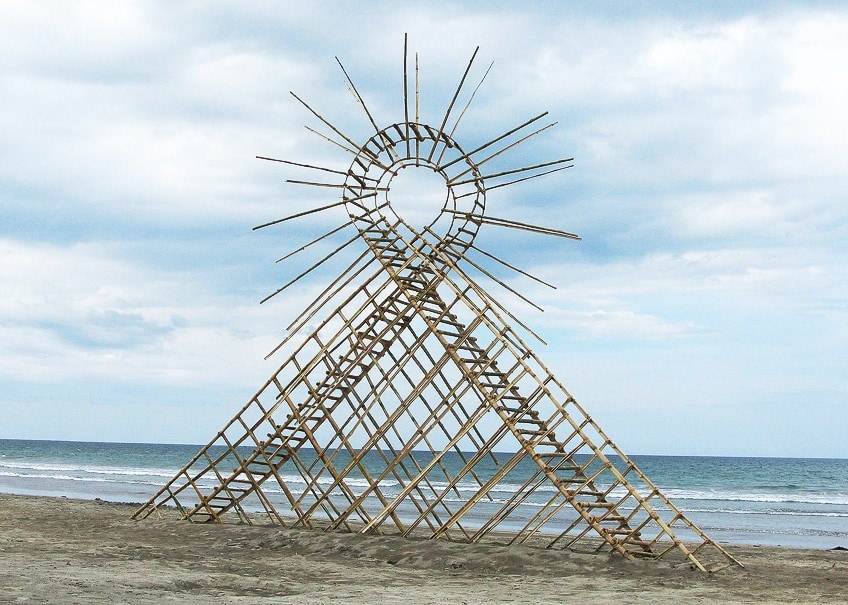
To make Environmental art is also an act that goes beyond simply producing relevant art and being boxed into a specific category. Environmental art is also a form of activism against the harsh effects that the production of art itself can have on the external world.
When producing an artwork, an Environmental artist’s first consideration is accounting for the materials required for execution. Many resources used in artmaking contain toxic ingredients that have been proven to have negative effects on the environment.
Through an act of refusal to comply with traditional mediums such as paint, an environmentally conscious artwork is formed in the process.
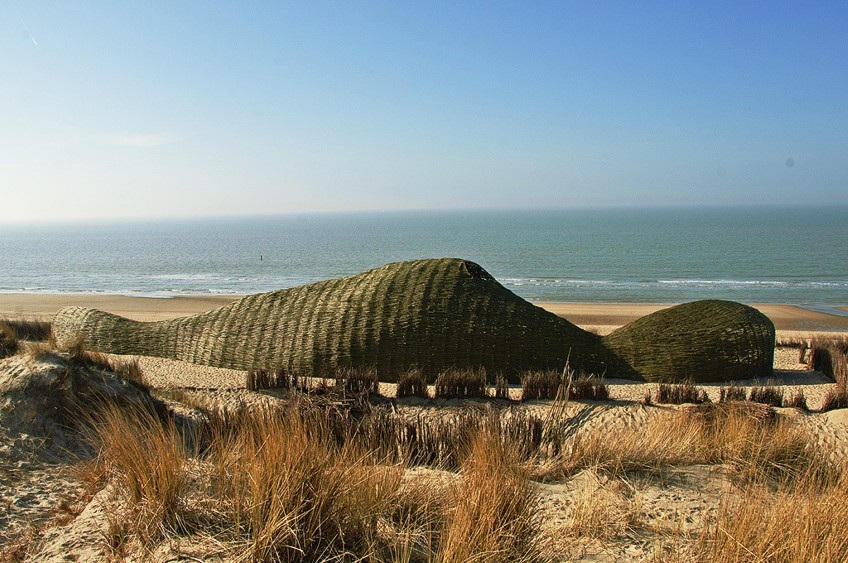
Traditionally, you would imagine an artist operates from a studio. Some Environmental artists prefer to use the landscape or natural environment to conduct their practice. By using the natural environment as a site for studio practice, Environmental artists not only avoid the costs of renting out and maintaining a studio but also ensure that their production process is sustainable to prevent contradiction.
Collaborating with the landscape also makes Environmental art prone to damage.
Naturally, exposure to the elements can erode or significantly alter artwork produced from sustainable materials. However, in the lens of Environmental art, exposure to the elements of nature itself becomes a process that can be used as part of your conceptual framework for the artwork and what it stands for.
Art and the Environment: Impact
You may be aware that certain substances and products used to create art may contain toxic and often harmful ingredients, not only to the environment but also to human health. Even the most common of art supplies can prove deadly.
Cadmium red has been proven to be extremely toxic when exposed to large quantities.
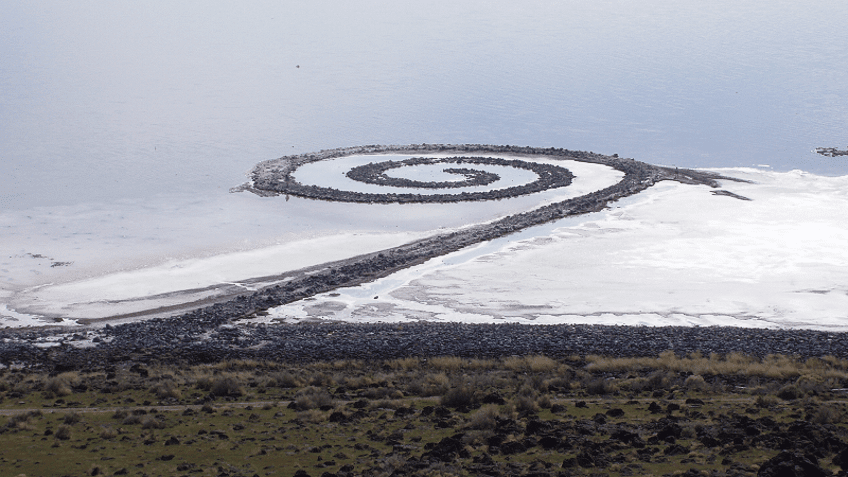
The effects of being exposed to cadmium-based products include respiratory issues, a higher risk of contracting cancer, and even liver damage. Not only does this affect you, but it is also equally as deadly to animals and plants.
10 Influential Environmental Artists and Their Artworks
Now that you have a brief overview of Environmental art and how it can be distinguished, it is fitting to draw reference from a few Environmental artists whose works incorporate the environment in different ways. Perhaps this can inspire you to find creative ways to rethink your approach to material in relation to your environment.
Agnes Denes (1931 – Present)
| Artist Name | Agnes Denes (Dénes Ágnes) |
| Nationality | Hungarian |
| Date of Birth | 1931 |
| Mediums | Sculpture, Writing, Drawing |
| Art Style/Movements/Themes | Earth art, Environmental art, Land art, Ecological art, Social Commentary |
With a primary focus on ecological art, American Environmental concept artist Agnes Denes is one of the many great pioneers of the Environmental movement. Through a series of gestures involving critical commentary on various historical events and their impact on the environment, Denes uses sculpture and performance as a way to solidify her potent statements.
Some of Denes’ most impactful works include “A Forest for Australia” (1998) and “Wheatfield – A Confrontation” (1982).
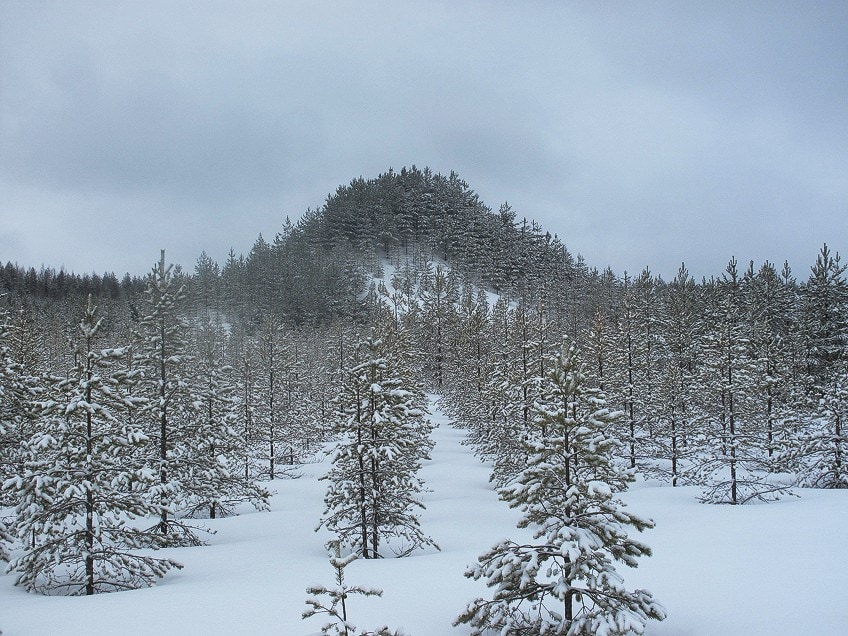
A Forest for Australia (1998) involved the artist planting around 6000 trees as spirals to assist with land erosion, and Wheatfield – A Confrontation (1982), where Denes utilized two acres of the Battery Park landfill in Manhattan to plant wheat. The field yielded around 1000 pounds, all of which were harvested and distributed across the world. The significance of this artwork lies in its lifespan, commentary, and dissemination.
The meaning behind the act served as a statement on the world at the time in reference to the economy, the growing inequality, and the Earth’s state at the time.
Nils-Udo (1937 – Present)
| Artist Name | Nils-Udo |
| Nationality | German |
| Date of Birth | 1937 |
| Mediums | Sculpture, Installation, Organic materials, Photography |
| Art Style/Movements/Themes | Environmental art |
German Environmental artist, Nils-Udo states “I sketch with flowers, paint with clouds and write with water”. Nils-Udo uses natural materials, site specificity, and sculpture to construct magnificent installations in nature.
Also called “the grandfather of Environmental art”, Nils-Udo draws his inspiration from a “dying world” and the ever-increasing destruction of the natural world.
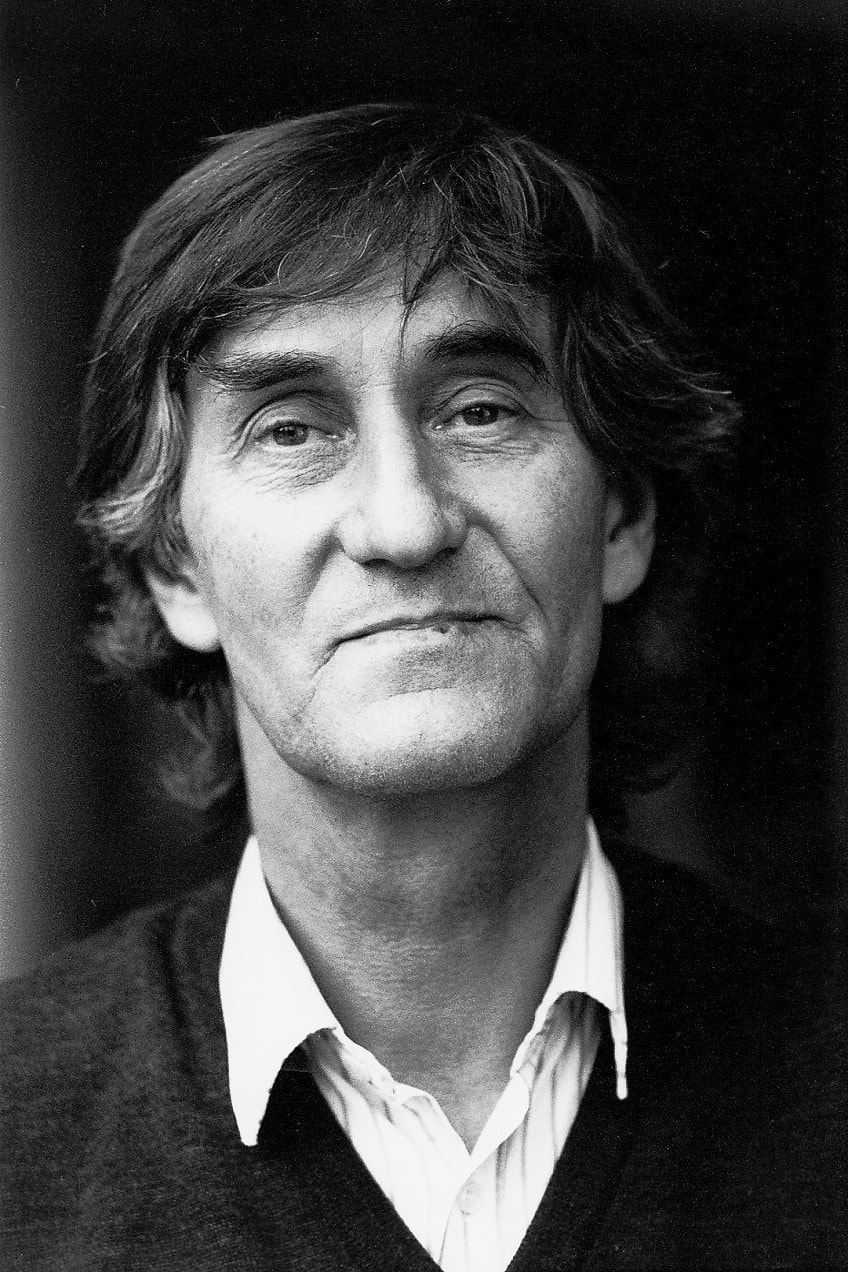
Stone-Age-Man (2001) is one such example from Udo’s collection that not only mimics the structure of an “ancient temple”, but also serves as nature’s remnants of time (via rock formation) and exposure to the elements. Stone-Age-Man is an enormous rock placed in the middle of a wooden cube-like frame.
The work essentially highlights the way that one can use the natural environment to curate the way that the public views and interprets Environmental art.
Ana Mendieta (1948 – 1985)
| Artist Name | Ana Mendieta |
| Nationality | Cuban |
| Date of Birth | 18 November 1948 |
| Date of Death | 08 September 1985 |
| Mediums | Painting, Photography, Performance, Sculpture |
| Art Style/Movements/Themes | Afro-Cuban Tradition, Earth art, Ecofeminism, Land art, Performance art, Feminist art |
One of the most influential Environmental artists whose work can be classified as Earth art is Ana Mendieta. The Cuban-born artist is well known for her evocative performances incorporating the body in tandem with nature and the land.
Mendieta is also a key figure in Feminist art and can be seen leveraging Afro-Cuban ritual practices, the femme body, and the natural landscape in her land-body series, “Siluetas” (c. 1973 – 1981).
Mendieta makes body impressions on various landscapes as a means of expressing the “omnipresent female force” associated with the Earth. Other works by Mendieta involve painting and the use of natural resources such as flowers, moss, branches, and animal footprints.
David Buckland (1949 – Present)
| Artist Name | David Buckland |
| Nationality | British, American |
| Date of Birth | 1949 |
| Mediums | Photography, Performance |
| Art Style/Movements/Themes | Environmental art, Climate Change Awareness, Environmental Activism, Contemporary art, Contemporary Photography |
Artist, curator, writer, and filmmaker – David Buckland is renowned for his impact on Environmental art through his series of texts photographed on icebergs. Being the founder of a non-profit organization, Cape Farewell, which was responsible for the 2015 ArtCOP21 event organized in response to climate change, Buckland’s Ice Texts (2005-2010) highlights the negative effects of climate change and incorporates a multidisciplinary approach to artmaking.
Buckland’s investment in Environmental art included several expeditions to the Arctic as the site of production.
He states that “climate change is a reality caused by us all… it is a cultural, social and economic problem, and must move beyond scientific debate.” Buckland’s direct collaboration affected areas of climate change and his “direct” use of text projected onto the affected areas of the Arctic environment, is a profound gesture. Through direct collaboration with the environment, one can see that Environmental art carries a heavier load than that of other art movements.
This “load” is the seriousness behind the process, site, and impact on resources that reiterate the need to address the global crisis of climate change.
Chen Zhen (1955 – 2000)
| Artist Name | Chen Zhen |
| Nationality | Chinese |
| Date of Birth | 04 October 1955 |
| Date of Death | 13 December 2000 |
| Mediums | Mixed media, Sculpture, Installation, Found Objects |
| Art Style/Movements/Themes | Contemporary art, Post-modernity, Asian Urbanism, Globalization |
Conceptual artist Chen Zhen, who was born and raised in Shanghai, is a notable leader of global Contemporary art and an exemplary contributor to the Environmental art movement. Zhen combines sculpture and installation to create beautiful sculptural installations informed by his experience, which he calls “transexpèrience”. His works also feature in many prominent contemporary exhibitions, including Palais de Tokyo, Gwangju Biennial, Asia-Pacific Triennial of Contemporary Art, Serpentine Gallery, and many other group exhibitions.
A sculptural installation to take note of is “Fu Dao/Fu Dao, Upside-Down Buddha/Arrival at Good Fortune”, created in 1997 out of found objects, including common household appliances, string, resin Buddha statues, a computer monitor, bamboo, and steel.
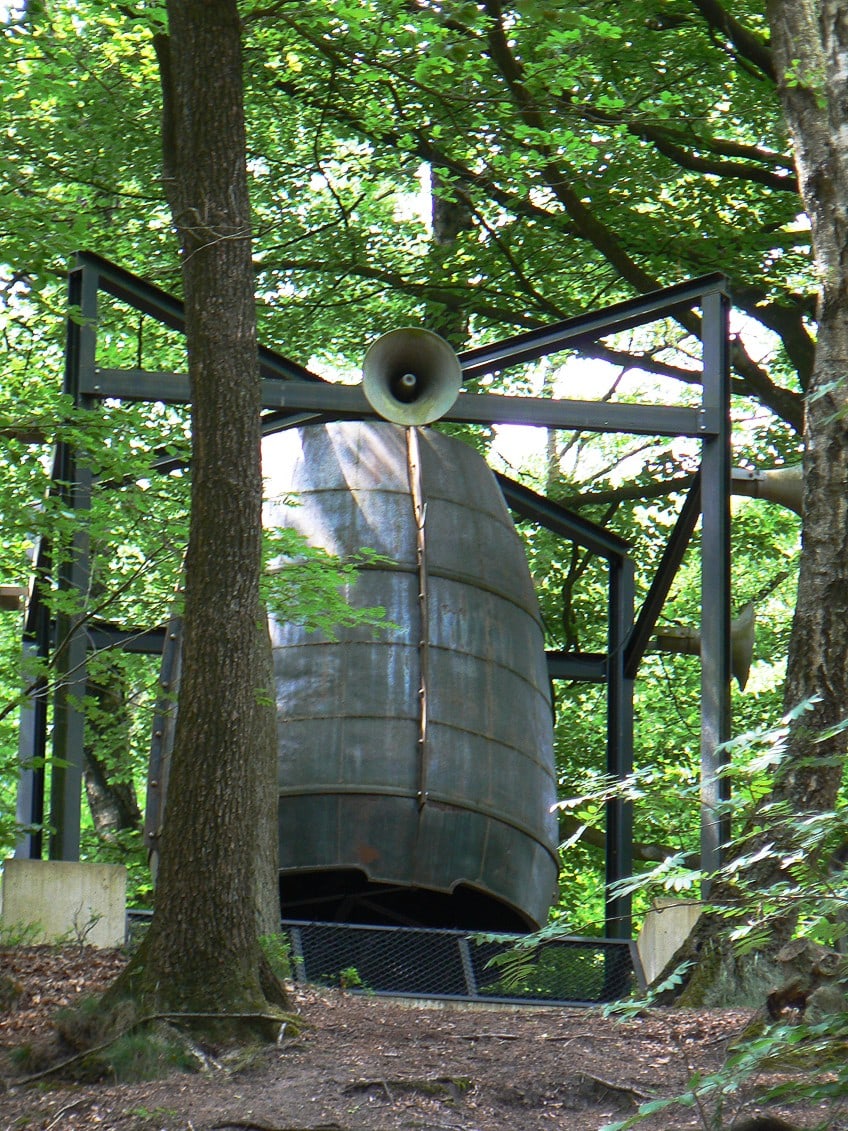
This activation is an excellent example of Zhen’s exposure to “cultural shock” after moving from Shanghai to France and makes for interesting connections between man, nature, and consumerism, as referred to by Zhen as the rapid consumer culture of Asia.
The intersectionality between the natural environment and the household environment is made clear and is suggestive of the impact of fast-paced consumerism on the environment.
Zhen’s talent for creating a visual display of the “yin to the yang” is a reminder that as much beauty and growth that nature brings, there is also human nature that invents. The nature of man to develop and thrive on consumerism will eventually encapsulate nature, thus disturbing the balance.
Edward Burtynsky (1955 – Present)
| Artist Name | Edward |
| Nationality | Canadian |
| Date of Birth | 22 February 1955 |
| Mediums | Photography |
| Art Style/Movements/Themes | Industrial Landscape Photography, Landscape art, Environmental art, Sublime, Manufactured Landscapes, |
Capturing the affected site through photography is another form of environmental activism as it mirrors a sense of journalism and seriousness associated with climate change. With works collected by over 60 global museums, award-winning photographer Edward Burtynsky photographs various sites affected by industry. Burtynsky’s images capture the natural landscape as it appears, often eroded, diminished, and sapped off the once abundant greenery.
An industry that has wreaked havoc on the natural landscape is the oil industry and its impact has been documented for over 15 years by Burtynsky.
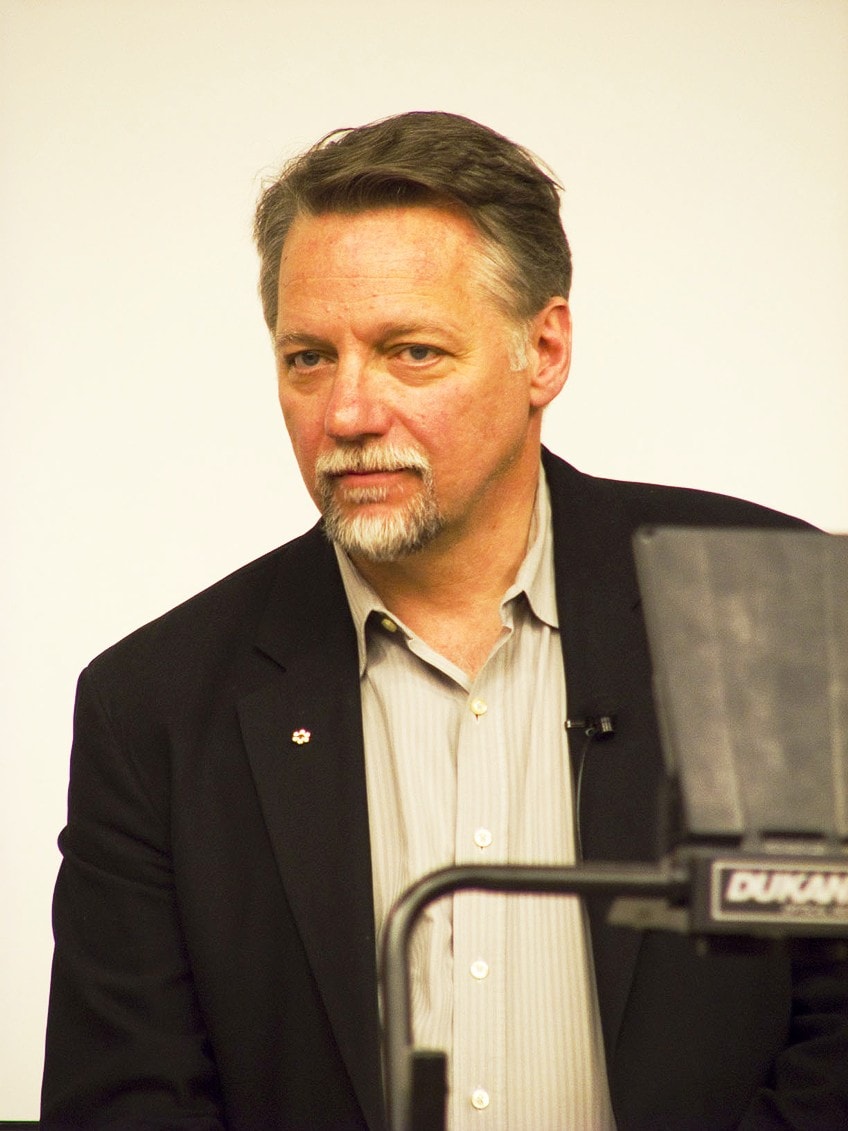
Burtynsky puts into perspective the impact of this industry by photographing various related elements, from the source to the environmental destruction. This is what the artist refers to as the photography of “the landscape of oil” which is a great way of framing one’s understanding of his process and thinking behind the image.
Included in this oil landscape are oil drums, scrap yards, discarded auto engines, and derelict oilfields. The visuals of which are defined by mass production, excess, and a lack of the natural landscape, as it was before industrialization.
Other notable productions by Burtynsky include “Manufactured Landscapes” (2003), “Watermark” (2006), and “ANTHROPOCENE: The Human Epoch” (2018).
John Akomfrah (1957 – Present)
| Artist Name | John Akomfrah |
| Nationality | British (Ghanian descent) |
| Date of Birth | 04 May 1957 |
| Mediums | Filmography, Video installation, Film installation |
| Art Style/Movements/Themes | Migration, Environmental art, Racism, Religious Persecution, The Anthropocene, Black Diaspora, Archive, Sound |
British filmmaker and artist, John Akomfrah is considered one of the United Kingdom’s most poetic and pioneering filmmakers. Akomfrah is also a prolific artist, curator, and founder of the Black Audio Film Collective (1982-1998), which was a group of several artists who came together as a collective in response to the 1980s social uprising.
Much of Akomfrah’s films draw attention to the Black diaspora and issues around race, mass migration, and the impact that climate change has had on various communities, nature, and biodiversity.
As seen in Purple (2017), a 62-minute-long film using archival footage, Akomfrah highlights one of the main subdivisions of Environmental art, climate change. The film premiered in the USA at the ICA Watershed and was displayed across six channels. According to Akomfrah, the film emerged from “a series of frustrations and dissatisfactions” and that the Earth is no longer a place of “unlimited landscapes to explore ad infinitum”, rather it is currently “wasting away” as society continues to destroy itself.
“Purple” does something that a lot of Environmental artworks do not. It draws attention to the idea of climate change moving away from just a predominantly “European fixation”, as stated by Akomfrah.
The content is curated in such a way that it shifts the entire presentation of climate change and delivers the issues from an African standpoint – an important gesture toward changing the whole narrative of climate change.
Hito Steyerl (1966 – Present)
| Artist Name | Hito Steyerl |
| Nationality | German |
| Date of Birth | 01 January 1966 |
| Mediums | Film, Writing, Video Installation Architecture, Digital Graphics, |
| Art Style/Movements/Themes | Environmental art, Contemporary art, Surveillance migration, Digital Imagery, Globalization, Found Images, Militarization, Representation, Transparency, Sustainability, Corporate Sponsorship, Satire, Metaphor |
Often associated with critical theory on the dissemination of digital images, German artist and professor of New Media Art, Hito Steyerl, draws attention to matters of the Anthropocene and the power dynamics of technology in predicting the future.
Many of her works discuss issues surrounding militarization and the distribution of digital imagery in relation to various social concerns such as globalization and the environment.
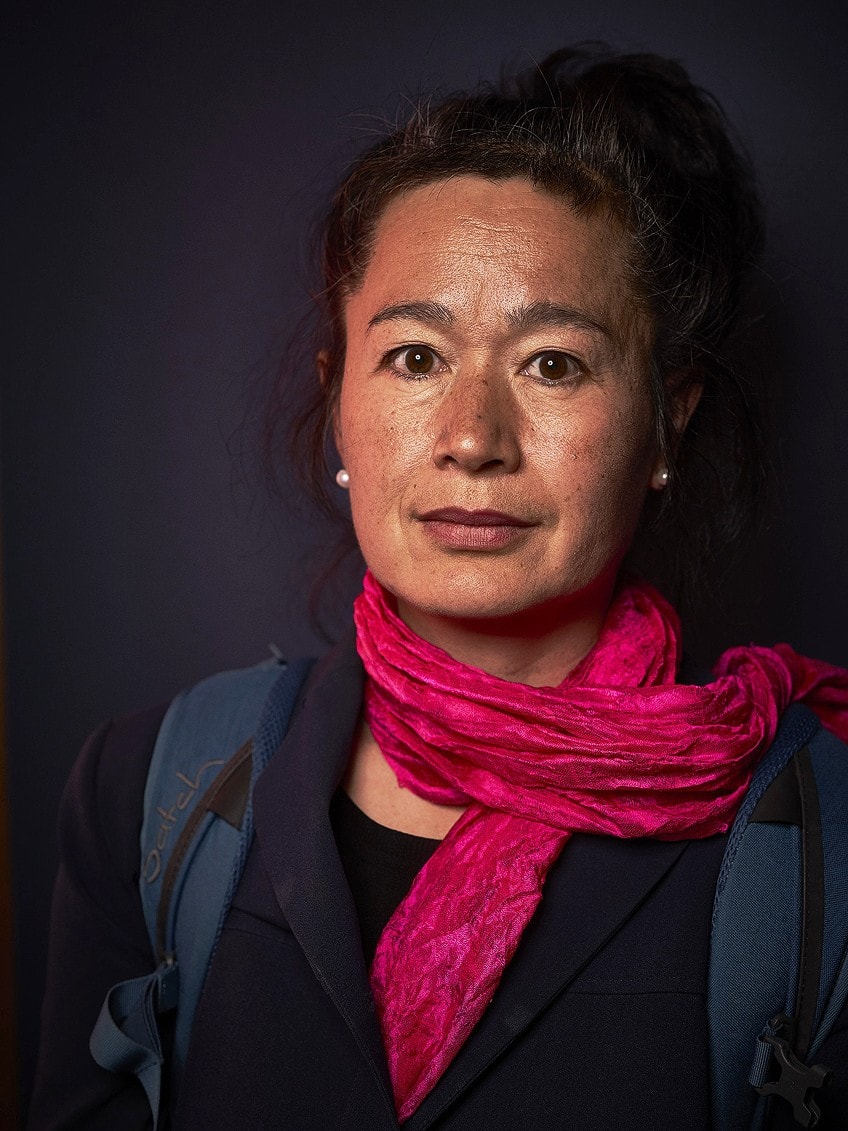
Steyerl’s use of digital tools and film has propelled her involvement in many international exhibitions, including the Venice, Shanghai, and Istanbul Biennale. Famous films and installations by Steyerl include Red Alert (2007) and most recently, Power Plants (2019).
Power Plants is a video-based installation constructed by artificial intelligence; a technological phenomenon also used to predict the future through training. Steyerl cleverly incorporated the use of artificial intelligence to present a series of “predicted plants” which are visualized approximately 0.04 seconds into the future.
Steyerl’s predictive installation highlights the danger of this advancement and poses the question of how such “advancements” could affect the natural environment.
Benjamin Von Wong (1986 – Present)
| Artist Name | Benjamin Von Wong (Huáng Zhì Míng) |
| Nationality | Canadian |
| Date of Birth | 14 November 1986 |
| Mediums | Photography, Sculpture, Film, Installation, Cinematography |
| Art Style/Movements/Themes | Hyperrealism, Contemporary art, Environmental art, Plastic waste, |
Former design engineer, Benjamin Von Wong is a remarkable artist who demonstrates his strong advocacy for preventing climate change and driving more awareness around wastage through his stunning visual reinventions.
Von Wong makes use of discarded plastic bottles, straws, and laptops to create artistic compositions that depict an “other-worldly” quality through the careful arrangement of e-waste, plastic waste, cinematic lighting, and monumental sculptural quality.
Von Wong has collaborated with multiple brands, including Dell Inc. on the production of artistic sets using 4100 pounds of electronic waste. As he states on his website, “globally, only 15% of E-Waste is recycled”, which paints a clear picture of the amount of waste that goes unrecycled.
Other major names the artist has partnered with include Nikon, Huawei, and Nike.
Luzinterruptus (2008 – Present)
| Artist Name | Luzinterruptus (Anonymous collective) |
| Location | Madrid, Spain |
| Founded In | 2008 |
| Mediums | Sculpture, Public Installation |
| Art Style/Movements/Themes | Environmental art, Pollution Awareness, Urban art, Public art, |
According to the latest OECD report, the quantity of plastic waste is “on track” to triple by the year 2060 if humanity continues to avoid radical change. Luckily for the art world, a Spanish collective, Luzinterruptus cast its focus on building awareness around global plastic waste through large-scale public installations and sculptures.
The group made headlines for its public installation at Poland’s Katowice street festival in 2014.
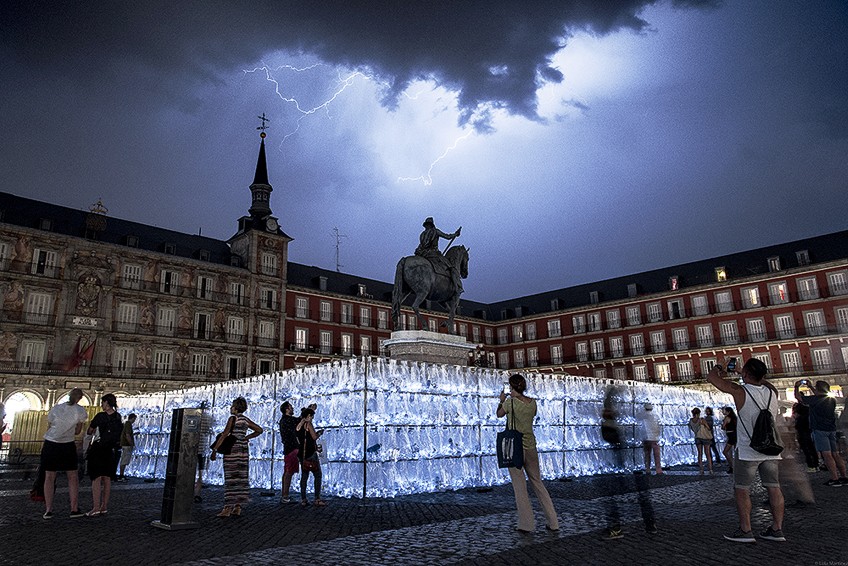
The interactive artwork comprising a Labyrinth of Plastic Waste was also exhibited in Argentina. The collective has since acquired more plastic bottles and managed to incorporate around 15 000 bottles in their last installation.
As stated in an interview in 2020, Luzinterruptus spoke on their practice saying, “we do not use last generation technologies, nor sophisticated materials, just common stuff that we all have around us.”
The intention behind setting up a “man-made” environment constructed out of plastic within the urban space is a reminder of the claustrophobia that the environment is facing through pollution. To further immerse the audience, the maze was situated in an environment of over 40 degrees, which when in the maze, you are experiencing what the Earth does – global warming.
As Environmental art gains traction, it is more important than ever to investigate areas for improvement in making your art practice more sustainable. Other contemporary Environmental artists who have made a significant impact on the ways in which Environmental art can be executed include Noémie Goudal, Suzanne Husky, and art partners, Lucy, and Jorge Orta.
Frequently Asked Questions
What Is Climate Change?
Climate change refers to a major threat facing humankind informed by multiple long-term changes in global weather patterns and temperatures. This is considered a negative phenomenon as human influences, caused by the destruction of the natural environment by various industries, hasten climate change and could potentially lead to certain areas of Earth becoming uninhabitable.
What Does It Mean to Create Sustainable Art?
Creating sustainable art means to consider the process or method you use to make your artwork and involves trying to incorporate a process or materials that will make your artwork safe for the environment. This means that your artwork, throughout its lifecycle, will not have a negative impact on the environment in any way.
How Can You Make Environmental Art?
You can produce Environmental art by using sustainable art materials, being intentional on-site specificity, incorporating natural elements into the artwork, and developing a concept for the artwork in connection with current environmental concerns or themes.
Isabella studied at the University of Cape Town in South Africa and graduated with a Bachelor of Arts majoring in English Literature & Language and Psychology. Throughout her undergraduate years, she took Art History as an additional subject and absolutely loved it. Building on from her art history knowledge that began in high school, art has always been a particular area of fascination for her. From learning about artworks previously unknown to her, or sharpening her existing understanding of specific works, the ability to continue learning within this interesting sphere excites her greatly.
Her focal points of interest in art history encompass profiling specific artists and art movements, as it is these areas where she is able to really dig deep into the rich narrative of the art world. Additionally, she particularly enjoys exploring the different artistic styles of the 20th century, as well as the important impact that female artists have had on the development of art history.
Learn more about Isabella Meyer and the Art in Context Team.
Cite this Article
Isabella, Meyer, “Environmental Artists – Discover the Top Environmental Art Pieces.” Art in Context. July 26, 2022. URL: https://artincontext.org/environmental-artists/
Meyer, I. (2022, 26 July). Environmental Artists – Discover the Top Environmental Art Pieces. Art in Context. https://artincontext.org/environmental-artists/
Meyer, Isabella. “Environmental Artists – Discover the Top Environmental Art Pieces.” Art in Context, July 26, 2022. https://artincontext.org/environmental-artists/.


